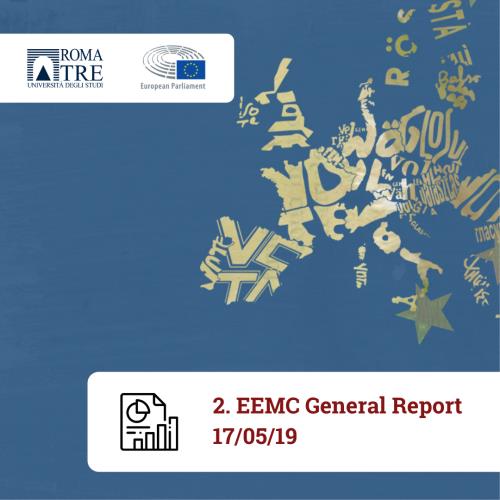Country report: ROMANIA
28/04/19 - 15/05/19
The "Country report: ROMANIA" has been based upon data gathered from 28/04/2019 to 15/05/2019.
Chart n°1 - Content typology
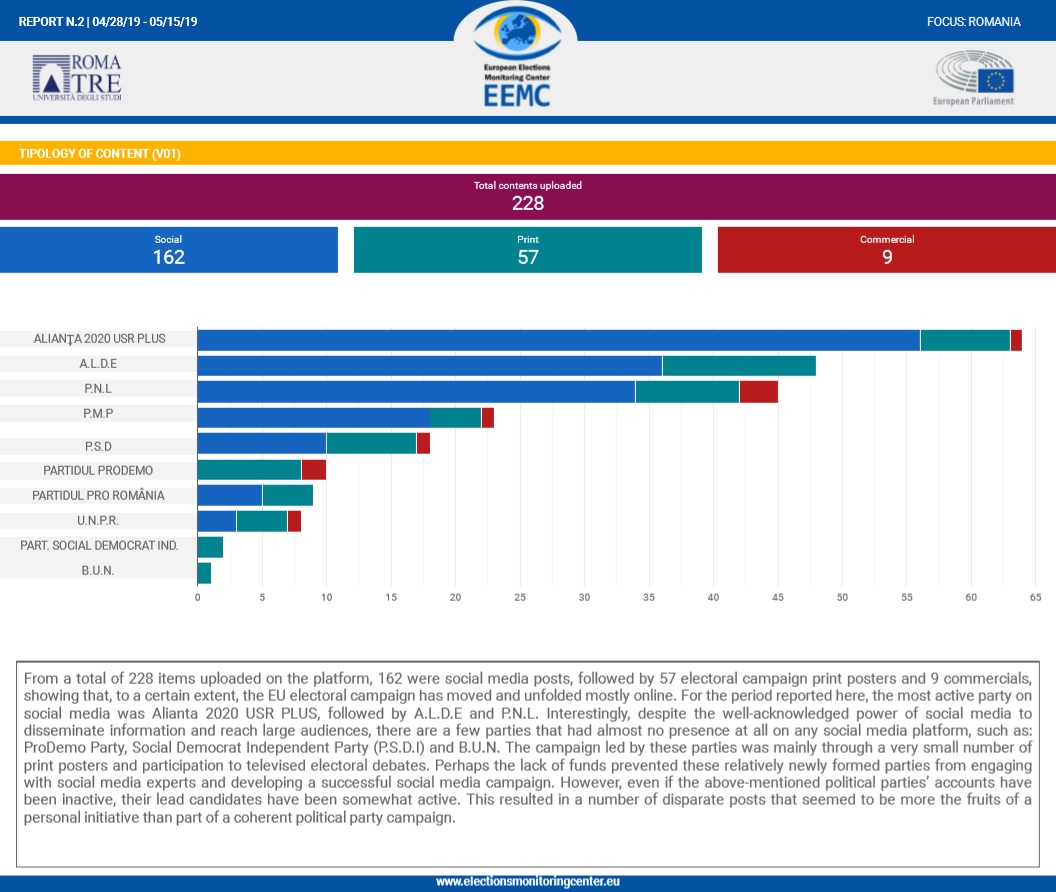
From a total of 228 items uploaded on the platform, 162 were social media posts, followed by 57 electoral campaign print posters and 9 commercials, showing that, to a certain extent, the EU electoral campaign has moved and unfolded mostly online. For the period reported here, the most active party on social media was Alianta 2020 USR PLUS, followed by A.L.D.E and P.N.L. Interestingly, despite the well-acknowledged power of social media to disseminate information and reach large audiences, there are a few parties that had almost no presence at all on any social media platform, such as: ProDemo Party, Social Democrat Independent Party (P.S.D.I) and B.U.N. The campaign led by these parties was mainly through a very small number of print posters and participation to televised electoral debates. Perhaps the lack of funds prevented these relatively newly formed parties from engaging with social media experts and developing a successful social media campaign. However, even if the above-mentioned political parties’ accounts have been inactive, their lead candidates have been somewhat active. This resulted in a number of disparate posts that seemed to be more the fruits of a personal initiative than part of a coherent political party campaign.
Chart n°2 - Focus
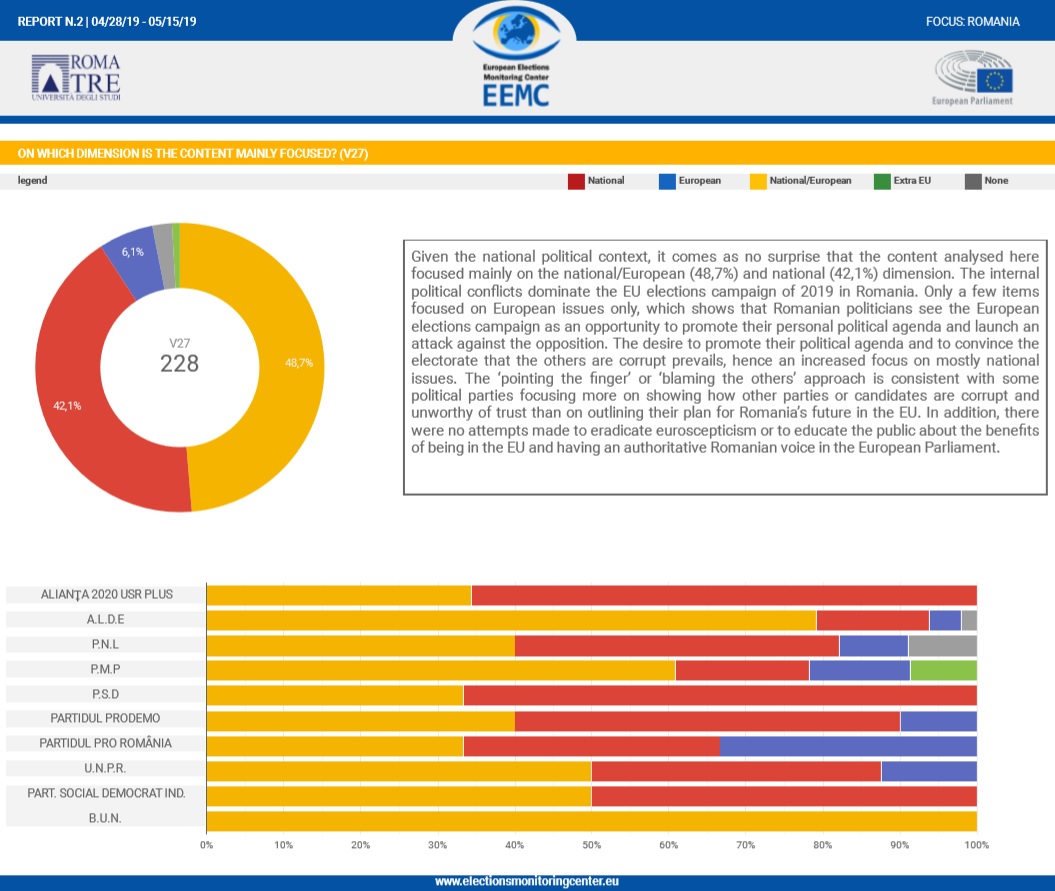
Given the national political context, it comes as no surprise that the content analyzed here focused mainly on the national/European (48,7%) and national (42,1%) dimension. The internal political conflicts dominate the EU elections campaign of 2019 in Romania. Only a few items focused on European issues only, which shows that Romanian politicians see the European elections campaign as an opportunity to promote their personal political agenda and launch an attack against the opposition. The desire to promote their political agenda and to convince the electorate that the others are corrupt prevails, hence an increased focus on mostly national issues. The ‘pointing the finger’ or ‘blaming the others’ approach is consistent with some political parties focusing more on showing how other parties or candidates are corrupt and unworthy of trust than on outlining their plan for Romania’s future in the EU. In addition, there were no attempts made to eradicate Euroscepticism or to educate the public about the benefits of being in the EU and having an authoritative Romanian voice in the European Parliament.
Chart n°3 - How is Europe represented?
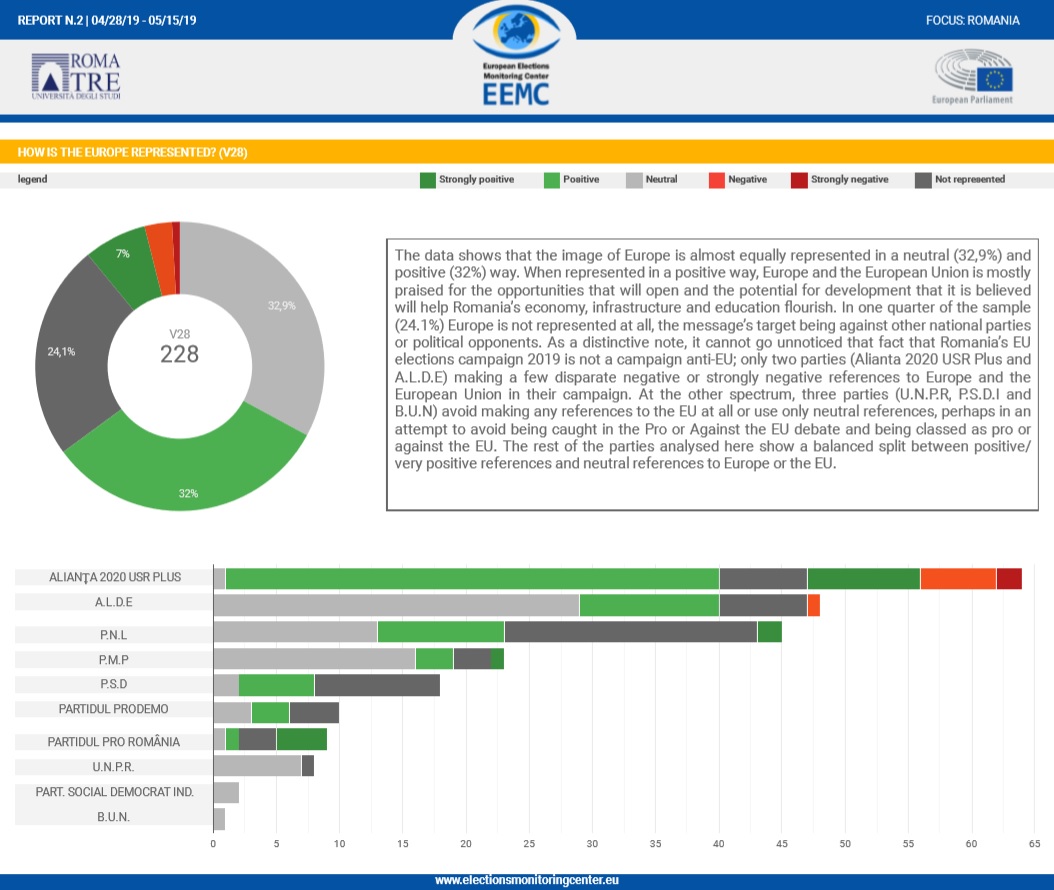
The data shows that the image of Europe is almost equally represented in a neutral (32,9%) and positive (32%) way. When represented in a positive way, Europe and the European Union is mostly praised for the opportunities that will open and the potential for development that it is believed will help Romania’s economy, infrastructure and education flourish. In one quarter of the sample (24.1%) Europe is not represented at all, the message’s target being against other national parties or political opponents. As a distinctive note, it cannot go unnoticed that fact that Romania’s EU elections campaign 2019 is not a campaign anti-EU; only two parties (Alianta 2020 USR Plus and A.L.D.E) making a few disparate negative or strongly negative references to Europe and the European Union in their campaign. At the other spectrum, three parties (U.N.P.R, P.S.D.I and B.U.N) avoid making any references to the EU at all or use only neutral references, perhaps in an attempt to avoid being caught in the Pro or Against the EU debate and being classed as pro or against the EU. The rest of the parties analyzed here show a balanced split between positive/very positive references and neutral references to Europe or the EU.
Chart n°4 - Rational, emotional or neutral?
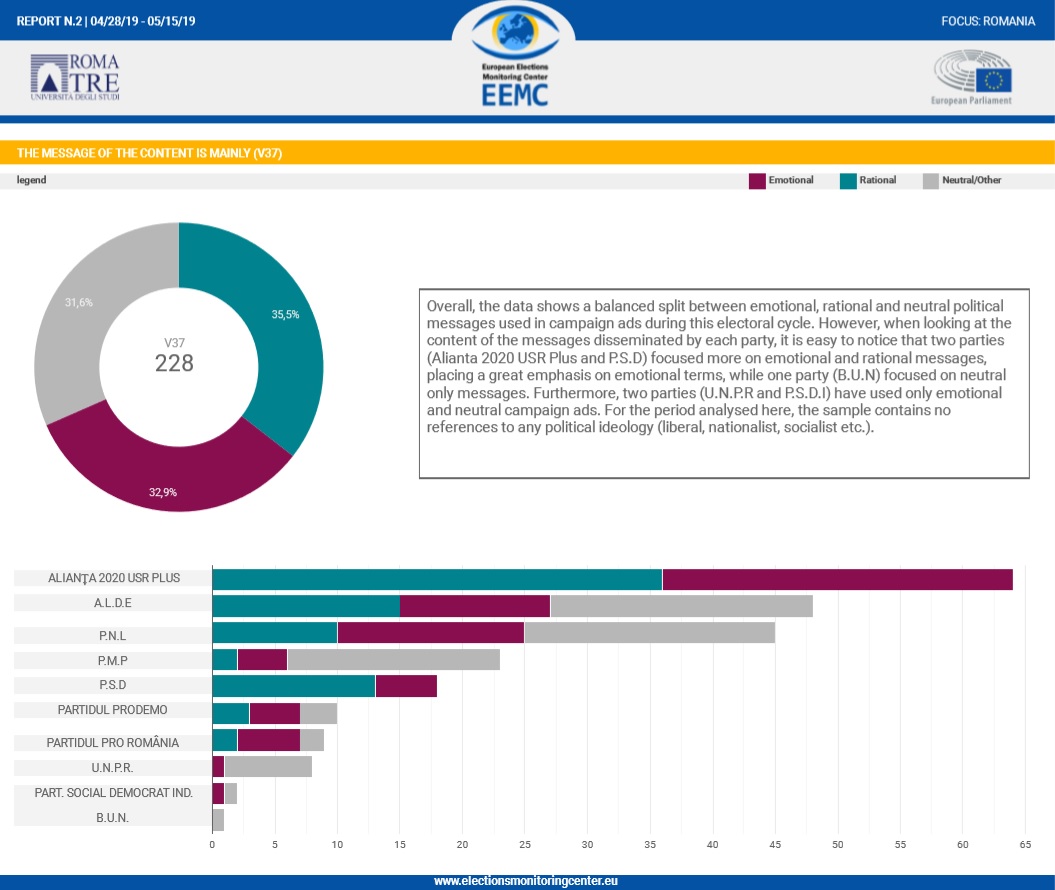
Overall, the data shows a balanced split between emotional, rational and neutral political messages used in campaign ads during this electoral cycle. However, when looking at the content of the messages disseminated by each party, it is easy to notice that two parties (Alianta 2020 USR Plus and P.S.D) focused more on emotional and rational messages, placing a great emphasis on emotional terms, while one party (B.U.N) focused on neutral only messages. Furthermore, two parties (U.N.P.R and P.S.D.I) have used only emotional and neutral campaign ads. For the period analyzed here, the sample contains no references to any political ideology (liberal, nationalist, socialist etc.).
To download the "Country report: ROMANIA" in pdf format:

From a total of 228 items uploaded on the platform, 162 were social media posts, followed by 57 electoral campaign print posters and 9 commercials, showing that, to a certain extent, the EU electoral campaign has moved and unfolded mostly online. For the period reported here, the most active party on social media was Alianta 2020 USR PLUS, followed by A.L.D.E and P.N.L. Interestingly, despite the well-acknowledged power of social media to disseminate information and reach large audiences, there are a few parties that had almost no presence at all on any social media platform, such as: ProDemo Party, Social Democrat Independent Party (P.S.D.I) and B.U.N. The campaign led by these parties was mainly through a very small number of print posters and participation to televised electoral debates. Perhaps the lack of funds prevented these relatively newly formed parties from engaging with social media experts and developing a successful social media campaign. However, even if the above-mentioned political parties’ accounts have been inactive, their lead candidates have been somewhat active. This resulted in a number of disparate posts that seemed to be more the fruits of a personal initiative than part of a coherent political party campaign.
Chart n°2 - Focus

Given the national political context, it comes as no surprise that the content analyzed here focused mainly on the national/European (48,7%) and national (42,1%) dimension. The internal political conflicts dominate the EU elections campaign of 2019 in Romania. Only a few items focused on European issues only, which shows that Romanian politicians see the European elections campaign as an opportunity to promote their personal political agenda and launch an attack against the opposition. The desire to promote their political agenda and to convince the electorate that the others are corrupt prevails, hence an increased focus on mostly national issues. The ‘pointing the finger’ or ‘blaming the others’ approach is consistent with some political parties focusing more on showing how other parties or candidates are corrupt and unworthy of trust than on outlining their plan for Romania’s future in the EU. In addition, there were no attempts made to eradicate Euroscepticism or to educate the public about the benefits of being in the EU and having an authoritative Romanian voice in the European Parliament.
Chart n°3 - How is Europe represented?

The data shows that the image of Europe is almost equally represented in a neutral (32,9%) and positive (32%) way. When represented in a positive way, Europe and the European Union is mostly praised for the opportunities that will open and the potential for development that it is believed will help Romania’s economy, infrastructure and education flourish. In one quarter of the sample (24.1%) Europe is not represented at all, the message’s target being against other national parties or political opponents. As a distinctive note, it cannot go unnoticed that fact that Romania’s EU elections campaign 2019 is not a campaign anti-EU; only two parties (Alianta 2020 USR Plus and A.L.D.E) making a few disparate negative or strongly negative references to Europe and the European Union in their campaign. At the other spectrum, three parties (U.N.P.R, P.S.D.I and B.U.N) avoid making any references to the EU at all or use only neutral references, perhaps in an attempt to avoid being caught in the Pro or Against the EU debate and being classed as pro or against the EU. The rest of the parties analyzed here show a balanced split between positive/very positive references and neutral references to Europe or the EU.
Chart n°4 - Rational, emotional or neutral?

Overall, the data shows a balanced split between emotional, rational and neutral political messages used in campaign ads during this electoral cycle. However, when looking at the content of the messages disseminated by each party, it is easy to notice that two parties (Alianta 2020 USR Plus and P.S.D) focused more on emotional and rational messages, placing a great emphasis on emotional terms, while one party (B.U.N) focused on neutral only messages. Furthermore, two parties (U.N.P.R and P.S.D.I) have used only emotional and neutral campaign ads. For the period analyzed here, the sample contains no references to any political ideology (liberal, nationalist, socialist etc.).
To download the "Country report: ROMANIA" in pdf format:
-
Related documents
-
Country Report, ROMANIA (28/04/19 - 15/05/19)


